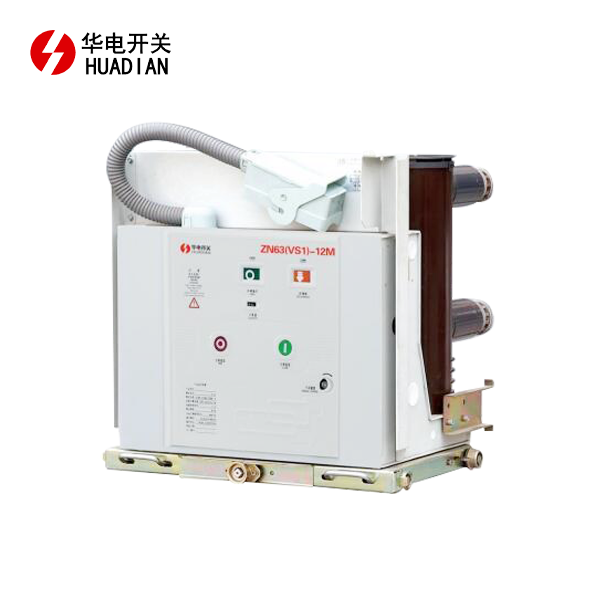
What are the difficulties in maintaining a vacuum circuit breaker compared to a vacuum circuit breaker?
2025-11-17 16:11:48
Maintenance of permanent magnet vacuum circuit breakers is a crucial task. Proper maintenance ensures safe and reliable operation and extends their service life. Compared to traditional spring-operated circuit breakers, permanent magnet circuit breakers have fewer components and a simpler structure, making maintenance relatively easier, but the focus differs.
The maintenance difficulty of permanent magnet mechanisms lies in "diagnosis" and "component replacement", while the maintenance difficulty of spring mechanisms lies in "mechanical adjustment" and "workload".

Spring mechanism: This is a mechanically intensive mechanism. Its reliability depends on the precise coordination and lubrication of numerous mechanical components such as gears, linkages, springs, and ratchet.
Permanent magnet mechanism: This is a mechatronics-intensive mechanism. Its reliability depends on the coordinated operation of permanent magnets, capacitors, electronic control units (drive boards), and a small number of mechanical components.
Based on this core difference, the maintenance difficulties are compared as follows:
| Maintenance aspects | Permanent magnet vacuum circuit breaker | Traditional spring mechanism vacuum circuit breaker | Difficulty analysis |
|---|---|---|---|
| Mechanical structure | Minimalism: Fewer parts (about 60% or even less of a spring mechanism) and a short transmission chain. | Complex: It has a large number of parts, including energy storage motors, gears, cams, connecting rods, closing springs, opening springs, etc. | Spring mechanisms are even more difficult to maintain. Maintenance involves dealing with numerous mechanical parts, and disassembly, assembly, and adjustment are extremely tedious, requiring exceptional skill and experience. |
| Mechanical adjustment | Very few: Almost no mechanical adjustments are required. Stroke and overtravel are usually set at the factory, requiring minimal adjustments later. | Numerous and crucial parameters require precise adjustment of the closing position, opening position, overtravel, energy storage position, and linkage angle. Improper adjustment of even one parameter can affect the entire mechanism. | The spring mechanism is significantly more difficult. This is the most time-consuming and technically demanding part of spring mechanism maintenance, truly a "master craftsman's job." |
| Lubrication | Simple: Only a small number of drive joints and pins need to be lubricated. | Complex and critical: Regular and comprehensive lubrication of the entire transmission chain (gears, bearings, connecting rods, etc.) is required. Improper lubrication or aging grease can lead to jamming and failure to move. | Spring mechanisms are more difficult to work with. They involve a large workload and have very high requirements for the type, amount, and location of the lubricant. |
| Condition diagnosis |
More difficult and more reliant on specialized equipment: 1. Permanent magnet magnetic attenuation: Cannot be judged visually; must be inferred indirectly through minimum operating voltage testing. 2. Capacitor aging: Requires specialized instruments to measure its capacitance and internal resistance. 3. Electronic control board failure: Complex to diagnose, typically using a "replacement method". |
Relatively intuitive: 1. Spring fatigue: Can be judged by observing phenomena such as insufficient energy storage and weak closing. 2. Mechanical wear: Can be directly detected by phenomena such as abnormal noise, jamming, and inaccurate positioning. 3. Mechanism failure: Most problems can be directly located by listening to sounds and observing movements. |
Permanent magnet mechanisms are even more difficult. The state of their core components (magnets, capacitors) cannot be determined by the naked eye or simple tools; it requires specialized instruments and data analysis, demanding a higher level of technical and theoretical knowledge from personnel. |
| Core component replacement |
More specialized, potentially more expensive: 1. Permanent magnets: Replacement is highly specialized, requiring return to the factory or operation by senior technicians, involving magnetization and assembly, resulting in high costs. 2. Capacitors/control boards: Replacement is relatively simple, but spare parts are highly specialized, leading to high costs. |
More routine, but more labor-intensive: 1. Springs: Replacement is routine work, but requires specialized tools and equipment. There is a significant risk of mechanical energy release during operation, requiring extra caution. 2. Motors/Gears: Replacement is more labor-intensive, but the technology is relatively mature. |
Each has its own challenges. Permanent magnet mechanisms are "expensive and specialized," while spring mechanisms are "complex and risky." |
| Electrical life/contact wear | Similarities: Both use vacuum interrupters, and the method for judging contact wear is the same (measuring overtravel changes). | Same | Same difficulty level. |
| Environmental requirements | Higher: Electronic components (capacitors, control boards) are more sensitive to temperature, humidity, and dust. | Relatively low: The main concerns are corrosion of mechanical parts and changes in the performance of lubricating grease. | Permanent magnet mechanisms have higher requirements. They need a cleaner and drier operating environment. |
Conclusion
From the perspective of technological development trends, permanent magnet circuit breakers, due to their low maintenance and high reliability, represent the future direction. The main challenge lies in early-stage diagnostics and spare parts management, rather than routine mechanical maintenance. For users, choosing permanent magnet circuit breakers means requiring more specialized diagnostic tools and technicians with higher theoretical levels of expertise.
Shaanxi Huadian vacuum circuit breakers lead the way in intelligent operation and maintenance.
The optimized spring operating mechanism boasts a stable structure, a mechanical lifespan of tens of thousands of cycles, and extended maintenance cycles, significantly reducing your total lifespan cost.
The leading permanent magnet operating mechanism features a minimalist and sophisticated structure, achieving maintenance-free operation, long lifespan, and low energy consumption. Combined with an intelligent controller, it enables remote monitoring and control, making it an ideal choice for building intelligent substations.
If you are interested,please contact us:
Email:pannie@hdswitchgear.com.
Whatsapp/Wechat:+8618789455087
YOU MAY LIKE



